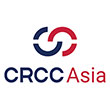Press photographer
Press photographers take photos for newspapers or magazines to tell stories in pictures of news, current affairs, people and events
As a press photographer, you'll take photographs to record news, current events and lifestyle stories. Your aim will be to capture the best images to document an event, tell a story or convey a message and support the printed word. The pictures are then reproduced in newspapers, magazines and online. Press photography is also known as editorial photography.
If you wish, you can develop your role into photojournalism. For this, you'll need a flair for using both images and words to investigate and tell a story. Photojournalists often work for magazines rather than newspapers and can work on a project over a long period of time.
Types of press photographer
Working as a press photographer, you could specialise in any number of areas, including:
- current events
- design
- entertainment
- lifestyle
- sport
- war.
Responsibilities
As a press photographer, you'll need to:
- work closely with other people concerned with the story, such as journalists and picture editors, and agree the photographic requirements for a story
- handle admin arrangements such as timing, press cards, transport and access to restricted areas, venues and events
- photograph events or personalities, and note details for photographic captions
- add relevant keywords to image files for picture libraries so that the images can be recognised in search engines
- ensure all pictures are appropriate, processed, catalogued and ready in time to meet deadlines
- prepare and send digital photographs for newspaper publication to deadline
- maintain up-to-date knowledge about current news stories and any specialist areas
- source freelance photographers for a job or existing photographs if pushed to meet a deadline
- arrange lighting and other requirements for magazine studio shoots
- check the weather forecast and light values of places beforehand
- maintain photographic and electronic communications equipment.
As a freelance press photographer, you'll also:
- research and anticipate relevant events
- negotiate the sale of specific shots
- handle all business activities, as well as establishing and maintaining contacts.
Salary
- Starting salaries for press photographers are usually in the range of £12,000 to £16,000.
- With more experience, salaries can rise to around £18,000 to £22,000.
- Very experienced photographers can earn anywhere from £25,000 to £60,000.
Salaries reflect the size of circulation of the newspaper and the experience and reputation of the photographer. Quality magazines may offer higher rates. Experienced photographers can earn a flat fee when commissioned to cover a specific event.
Negotiating a reasonable freelance fee is complex and it may be worth joining the National Union of Journalists (NUJ), which offers guidance on rates and contracts - see the NUJ Freelance Fees Guide for more details.
When calculating fees, remember to consider overheads for equipment, which can be around £100 per day. Freelance press journalists often sell images to picture libraries, or agencies whose daily rates vary from around £75 to £180.
Income figures are intended as a guide only.
Working hours
You need to be where the story is, so expect to work unsocial hours including evenings and weekends. For example, if sport is your specialist area, you'll be required to attend evening and weekend fixtures. Time off in lieu is generally given.
What to expect
- Most newspapers have a small core of staff photographers including senior photographers and a picture editor. Agencies and many newspapers use regular contract freelancers, on a good daily rate of pay and with guaranteed work. However, the bulk of press images come from freelancers with regional or specialist knowledge or from agencies.
- National newspapers only recruit experienced photographers with a substantial track record. At this level, it'll be assumed that you can use a camera proficiently, but you'll also need to show that you can handle people, meet deadlines and be in the right place at the right time to get the pictures.
- Magazines sometimes employ photographers with specialist areas, such as food or gardens. The emphasis here is more likely to be on creative skills and producing a suitable layout. Some magazines only employ freelance photographers.
- While the male to female ratio among press photographers is balancing out, areas such as sports and war remain particularly male-dominated.
- Most cities and large towns where newspapers are produced have employment opportunities. Detailed geographical knowledge is very useful to local photographers for finding the best viewpoint. A driving licence is essential, as travel within a working day is frequent. Overnight absence from home may be required, as may overseas work or travel.
- Work can be stressful if you're recording an accident or people's emotions and may also involve ethical decisions related to intrusion into private lives, and the possible consequences of the publication of photographs. You may experience objections to your photography and be required to deal with conflict.
Qualifications
A pre-entry qualification is not essential for a career in press photography but can be advantageous, as it offers formal training and demonstrates your motivation for the work.
The Diploma in Journalism course, run by the National Council for the Training of Journalists (NCTJ), includes the elective option of Photography for Journalists, which the NCTJ recommends is studied alongside the Videojournalism for digital platforms.
Although this area of work is open to all graduates and holders of a diploma, the following subjects may increase your chances:
- film/video/television
- graphic design/illustration
- media studies
- photography/photo imaging.
The Association of Photographers (AOP) has a list of accredited courses run by colleges and universities in the UK.
British Institute of Professional Photography (BIPP) - offers professional qualifications.
Master Photographers Association (MPA) - provides support, training and qualifications.
Skills
You'll need to show:
- excellent technical skills, using digital and non-digital cameras and industry-standard software such as Photoshop
- ability in, and knowledge of, video, taking into account video packages on various newspaper websites
- initiative when reacting quickly to situations
- the ability to convey information
- awareness of the positions taken by the publication you are applying to
- creativity and an eye for a picture
- assertiveness with courtesy
- the ability to work under pressure to meet tight publication deadlines.
Advertisement
Work experience
Competition is fierce. With many freelance photographers competing in the marketplace, you can expect to be up against a lot of experienced and talented candidates when applying for an in-house press photographer role. Being proactive and tenacious, networking and having a thick skin are fundamental to breaking into this industry.
Pre-entry experience is essential, and developing the necessary technical skills and portfolio before approaching picture editors is vital. Work experience on a local paper can offer the opportunity of work shadowing and developing informal contacts, so contact them directly.
Try getting photographs published in local newspapers on a freelance basis. Freelance work may be followed by commissioned pieces or paid shifts.
It's a good idea to send some of your best pictures speculatively to picture editors and photo agencies, tailoring your selection to their style, and following this up with a phone call.
Find out more about the different kinds of work experience and internships that are available.
Employers
Most press photographers work for one of the provincial daily or evening papers, one of the weeklies, or an agency where targeted, speculative applications can be effective.
Most commonly, press photographers are self-employed, working either entirely on their own or in a small business with other photographers. Clearly, photographic skills are crucial, but the ability to run a business is equally important.
As a freelance photographer you can also sell photographs to picture libraries or agencies; for a list see the British Association of Picture Libraries and Agencies (BAPLA). Invoice and licence templates to protect you work are provided by the AOP.
Look for job vacancies at:
- British Journal of Photography
- Creative Opportunities
- HoldtheFrontPage
- Jobs4journalists
- Journalism.co.uk
For information on further sources, see the News Media Association.
Professional development
Training varies between newspapers and you may be offered on-the-job training or be placed on an in-house training scheme. Some papers arrange for new recruits to shadow experienced photographers before giving them their own assignments
Other training options include:
- the National Qualification in Journalism (NQJ) is a professional qualification offered by the NCTJ, which develops all-round competence in a range of skills. Trainee journalists with at least 18-months experience can take this qualification to achieve senior status.
- Courses and workshops run by the British Institute of Professional Photography (BIPP), leading to professional qualification. Photographers who attain BIPP qualifications are highly regarded within the industry.
- British Academy of Photography courses
- courses and projects available within the community, often organised by local photographic societies and clubs.
Career prospects
To progress your career, it's vital to keep up to date with advances in technology. Photographers now spend more and more time on computers improving their pictures and most have the means to email, retouch and print images on the spot. Digital photographic libraries can be created on the internet with easy-to-use software, enabling your work to be viewed and sold all over the world.
As well as improving your skills, you can develop your career as a press photographer in several ways, including:
- moving to a national daily newspaper and gaining seniority within the team
- moving within the magazine field to higher-level positions
- specialising in particular areas of photography, such as sport, the arts, fashion or advertising
- moving between newspapers and magazines to broaden your experience
- setting up your own practice with other photographers, or working freelance
- becoming a picture editor or running a picture library.
It may not always be easy to move between different fields of photography. Once you've specialised in one area, you may find you're pigeonholed by clients.
There is a structured career path within local papers. You'll start as a junior press photographer before moving on to a senior press photographer role. From here you'll progress to chief photographer or ultimately picture editor. You may be required to take courses in management and team leadership in order to progress.
Alternative careers
Related jobs and courses




work experience
Computer Science and IT Engineering Internship
- CRCC Asia (6 other jobs)
- Unpaid
- Mumbai

